Categories: Featured Articles » Sharing experience
Number of views: 34221
Comments on the article: 1
Popular about repair: how much it costs and how to save
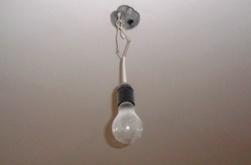 The first question that everyone asks when faced with the need to repair their home is how much it costs to make repairs.
The first question that everyone asks when faced with the need to repair their home is how much it costs to make repairs.
Construction companies and teams offer three main repair options: cosmetic, overhaul and European-quality repair.
The cheapest - redecorating. This, roughly speaking, where to tint, where to smear, where to glue the wallpaper. In general, it’s just to refresh the atmosphere, you look, it’s already happier to live. Such repairs are not difficult to do on their own, then its cost drops to the cost of materials. A private master will take about $ 25 for work per m2, the company will cost up to 60 cu per m2 (by floor area).
Overhaul is relevant when it comes to secondary housing. These are the Khrushchev’s, the Stalin’s, various special projects of the 80s. Overhaul includes knocking down old plaster and tiles, partial demolition of walls and partitions, replacing electrical wiring and plumbing pipes. After this, the walls are again plastered or finished with drywall.
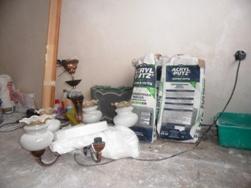 There will not be a real difference in price. Otherwise, the option with drywall is faster and not as dusty as with plaster. But then the plaster is more durable and less fire hazard. In addition, drywall finish will reduce the area of the premises by about 4 cm from each wall.
There will not be a real difference in price. Otherwise, the option with drywall is faster and not as dusty as with plaster. But then the plaster is more durable and less fire hazard. In addition, drywall finish will reduce the area of the premises by about 4 cm from each wall.
The cost of major repairs will be about 120 - 200 cu per m2 (by floor area). This is an approximate price with dismantling, electrics, plumbing, all rough materials, their delivery, garbage collection and other “delights” of overhaul. But, "beat the grandmother" so far in no hurry. These are figures without the cost of finishing materials. Finishing materials are tiles, laminate, parquet or linoleum, wallpaper or paint and other “cosmetics”.
Now about the European-quality repair. How does a European-style repair structurally and in a case differ from a major one, no one will intelligently answer you. The presence of a design project in the case of a European-quality repair is not an argument, because a design project can be made to you even with ordinary capital repairs. After all, the set of interior styles is the same for Europe and Asia.
European-quality repair, as capital repairs according to European standards - is silly. Our standards are initially different (see building codes). By the way, for example, according to the norms, they are allowed to pull the electric cable over the shortest distance, and this is already cheaper. So why does it cost more? European-quality repair, as a major overhaul of European quality ... It is doubtful that a specially trained, say, German worker will be delivered to you for a European-style repair. If only because whether to find this in the current situation in the European Union.
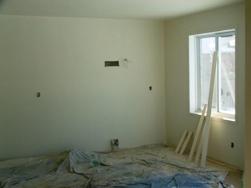 In general, according to the firm conviction of the author of the article, European-quality repair is a major overhaul, played on the pride and vanity of the customer on the one hand, and on the greed of the performer on the other. Because, as a performer, it’s a shame, for example, to lay tiles at the price of works 9-12 cu per m2, if this tile itself costs more than 30 cu per m2, and the check says that it is produced, say, in Italy. The customer is pleased to know that he has a European-quality repair, because in our minds it has been clearly established that the word euro is cool .. In general, everyone chooses the budget that seems reasonable to him. The cost of European-quality repair goes up from 400 cu per m2.
In general, according to the firm conviction of the author of the article, European-quality repair is a major overhaul, played on the pride and vanity of the customer on the one hand, and on the greed of the performer on the other. Because, as a performer, it’s a shame, for example, to lay tiles at the price of works 9-12 cu per m2, if this tile itself costs more than 30 cu per m2, and the check says that it is produced, say, in Italy. The customer is pleased to know that he has a European-quality repair, because in our minds it has been clearly established that the word euro is cool .. In general, everyone chooses the budget that seems reasonable to him. The cost of European-quality repair goes up from 400 cu per m2.
After a preliminary assessment of the upcoming costs, a reasonable question arises, how can you save on repairs.
How to save on redecorating, described above. In other words, stand up and do it yourself if you have free time. There is nothing complicated there.
With overhaul more options. Let's start with the work in the order of their implementation.
The first step is dismantling.Remove all old plaster and tile to brick, and the old floor in addition to loading and garbage will cost workers about 10-12 cu per m2 (by floor area, but depending on the height of the ceilings).
 An obvious saving option is to dismantle it yourself, because the work is unskilled, although insanely dusty. Only the costs of garbage disposal will remain. For example, for the removal of dismantled garbage from a two-room "stalin" with an area of 57 m2 and ceilings with a height of 3 m, two ZILs somewhere around 80-90 cu will be required. each (if no walls are demolished).
An obvious saving option is to dismantle it yourself, because the work is unskilled, although insanely dusty. Only the costs of garbage disposal will remain. For example, for the removal of dismantled garbage from a two-room "stalin" with an area of 57 m2 and ceilings with a height of 3 m, two ZILs somewhere around 80-90 cu will be required. each (if no walls are demolished).
In order to save ceilings, you can not touch, and, subsequently, sew them with drywall. Then, on the ceilings, significant savings are obtained, but the height of the ceilings decreases by 5-7 centimeters. You can also save by not knocking down the old plaster completely, but only where cavities are heard when tapping. Then, naturally, the volume of not only demolition work, but also subsequent plastering, decreases.
Of course, it sounds tempting, but in fact the option is dubious. Firstly, it is not known how non-broken plaster will behave during the subsequent plastering of crushed surfaces. When moisturized, it may just fall off, or maybe not - the risks are yours. Secondly, with partial dismantling, you need to think about the next stage of repair. Namely, about work with electrical wiring.
Ideally, electrical wiring is done after dismantling. If the plaster is dismantled completely, but not partially, then the cable is laid simply on a brick or concrete panel, fixed pointwise to alabaster or wire on self-tapping screws with dowels, and then covered with new plaster.
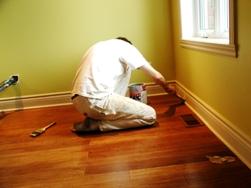 If the old plaster is partially removed, then to lay the cable the walls will have to be ditched. Those. make an in-depth groove for laying the electric cable.
If the old plaster is partially removed, then to lay the cable the walls will have to be ditched. Those. make an in-depth groove for laying the electric cable.
In the process of gating, the unmounted old plaster may just fall off, but for strobe meter all the same, you have to pay (at the lowest prices of electricians 1 cu per 1 m2). So, think for yourself here, think for yourself.
As for the wiring itself, then the savings are inappropriate. This is especially true for wiring made before the 90s. If the question is to change such wiring completely or partially add and transfer several outlets, then it is better to tighten up, but change completely. At least due to the fact that modern electrical appliances have much greater power consumption than the one for which the old wiring is designed.
Although, if you completely dismantle the old plaster and see for yourself the available wires, you yourself will come to the same conclusion. Well, if you don’t come, here’s a tip: when adding new sockets or lamps to the old wiring, remember that it is unacceptable to use different metals in one wiring. That is, if the old wiring is made of aluminum, then you also need to add a new cable for additional outlets and fixtures aluminum.
For reference complete wiring replacement in a two-room apartment with work and materials today it costs about 600 - 700 cu These are the prices of firms. Perhaps a private electrician can be negotiated cheaper - the question is what guarantees.
Wiring is followed by plumbing. Pipe replacement work will cost around $ 200 According to the materials - the choice is yours. Installation of plumbing equipment (toilets, sinks, faucets) have a separate price. In order to save, you can connect it all yourself, if you have the skill.
After the plaster has dried, cosmetic finishing work remains. There are too many finishes to fit in this article. The question is about saving, so a few words about the most budget options, which at a low cost have a fairly attractive look.
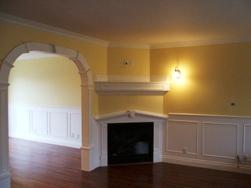 So, the ceilings in the corridor, bathrooms, on the kitchen and the balcony can be significantly reduced by finishing them not even with plasterboard, but with a seamless lining.Of course, it will not turn out to be an absolutely smooth canvas, like a stretch ceiling, and the joints will be slightly visible, but this is even juicy.
So, the ceilings in the corridor, bathrooms, on the kitchen and the balcony can be significantly reduced by finishing them not even with plasterboard, but with a seamless lining.Of course, it will not turn out to be an absolutely smooth canvas, like a stretch ceiling, and the joints will be slightly visible, but this is even juicy.
Linoleum on the floor in a modern interior has ceased to be a relic of the past or a sign of government institutions. Today, linoleums are available for sale that completely repeat the structure of the tree, and in terms of performance they are not inferior to more expensive floor coverings. And even fairly non-poor people today prefer this option of sex. The savings here are not only and not so much on the material, but on the preparatory work for laying it. And this is a considerable amount.
If, due to savings, you plastered the walls yourself, then it is quite possible that it didn’t work perfectly perfectly. Vinyl wallpapers are insensitive to such flaws, and they also perfectly hide the unevenness of the photo wallpaper with a texture.
As for saving on the footage of the wallpaper itself, it is better to take a small drawing, then fewer scraps will go to the “fit”. By the way, if you put the plaster on deliberately unevenly random strokes, and then paint the wall, you can get a terrific option for your interior.
You can save on tiles and tile work. Work on laying tiles cost around 9-12 cu per m2. For example, in the kitchen, tiles are placed only above the working surface and to the hanging cabinets, and in the toilet not to the ceiling, but only 1.5 m from the floor. The wall between the tiles and the ceiling can be pasted over with washable wallpaper.
That's all. Good luck to you! Live comfortably!
We recommend reading: Proper wiring in drywall walls
See also at bgv.electricianexp.com
:
